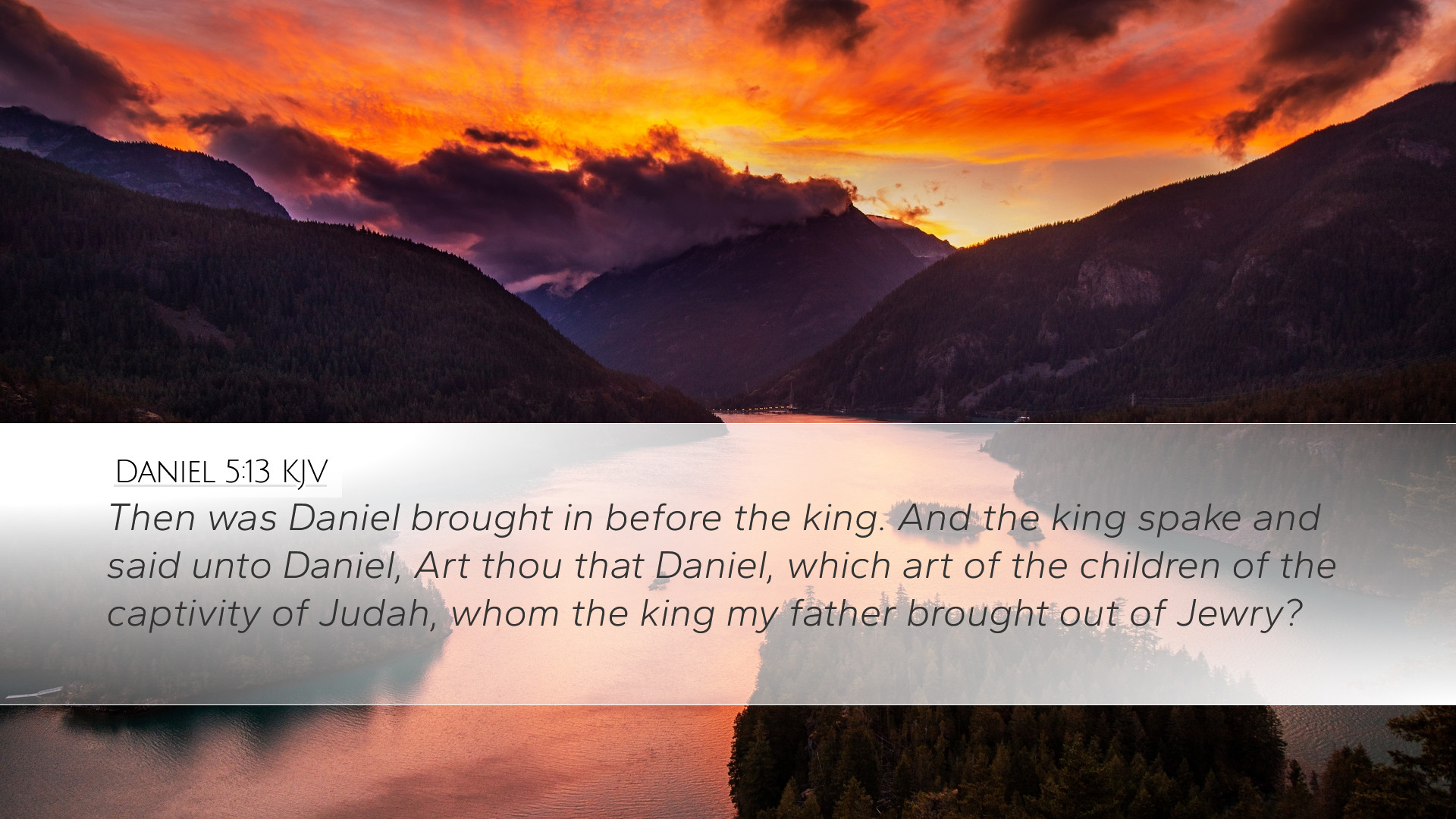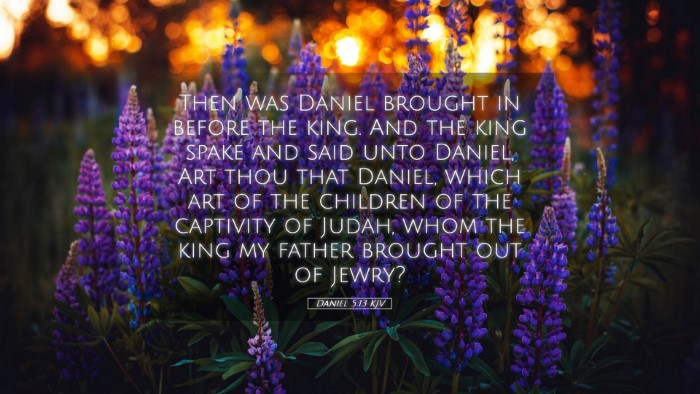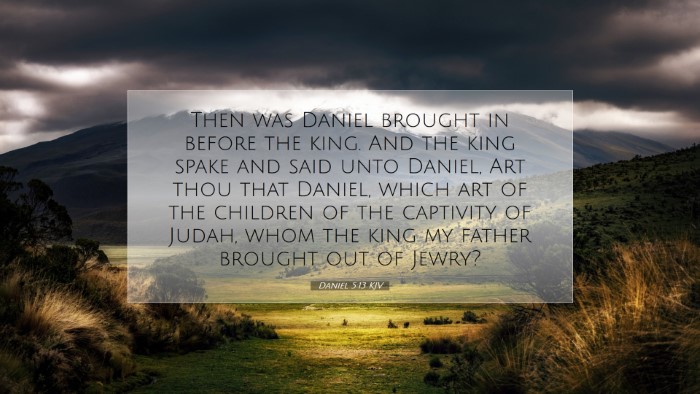Commentary on Daniel 5:13
Contextual Overview:
Daniel 5:13 presents a pivotal moment in the Babylonian Empire, where King Belshazzar faces dire consequences from a supernatural event. This verse invites exploration through various commentaries, shedding light on its implications, themes, and theological significance.
Immediate Context:
In the preceding verses, we find Belshazzar, the king of Babylon, consuming a grand feast and desecrating sacred items taken from the Jerusalem temple. This act of sacrilege precipitates a divine response, manifested in the mysterious writing on the wall witnessed by the king and his guests. Daniel's introduction into the narrative comes as the kingdom seeks interpretation of this ominous message.
Verse Analysis:
"Then was Daniel brought in before the king..."
This phrase highlights Daniel's role as a prophet and interpreter of God's will. His presence signifies hope amidst chaos and impending judgment.
Insights from Commentators:
-
Matthew Henry:
Henry emphasizes Daniel's reputation for wisdom in interpreting dreams and visions, attributing it to the Spirit of the Holy God. The king’s act of summoning Daniel showcases his desperation; he is aware of Daniel’s historical significance and divine favor.
-
Albert Barnes:
Barnes draws attention to the significance of the king's acknowledgment of Daniel's unique abilities. He cites the previous events of Daniel's life, including his interpretations for Nebuchadnezzar, which established him as a figure of godly wisdom during turbulent times.
-
Adam Clarke:
Clarke provides a critical look at the king's character, illustrating Belshazzar’s hedonistic revelry contrasted with Daniel's integrity and faithfulness to God. This juxtaposition serves to underline the ultimate moral lessons present in the narrative.
Theological Reflections:
The arrival of Daniel at this moment encapsulates themes of divine providence and judgment. His character reflects steadfastness in faith against a backdrop of societal collapse and moral decay. This scenario prompts reflection on how believers today respond to crises and challenges within their own contexts, remaining anchored in their faith.
Lessons for Today:
-
Divine Sovereignty:
Belshazzar’s feast and the subsequent judgment remind us that human actions are not beyond the compass of God’s knowledge and authority. The sudden shift from revelry to accountability should instigate a sense of reverence and awe for the divine.
-
Witness and Influence:
Daniel's steadfastness in a foreign and hostile environment serves as a model for Christians today. The call to remain impactful in society, leveraging our God-given abilities for His glory remains crucial.
-
Moral Courage:
Daniel's willingness to confront the king's sinful behavior exemplifies the courage required of God's people to speak truth to power. This is essential for integrity in leadership, requiring believers to mirror the virtues exhibited by Daniel.
Historical Considerations:
The historical setting of Daniel 5 reflects the decline of Babylon amidst external pressures, foreshadowing the rise of the Medo-Persian Empire. The significance of this transition, marked in the verse, alerts readers to the transient nature of earthly kingdoms and the eternal nature of God’s kingdom.
Applications for Ministry:
-
Preaching and Teaching:
When preaching on Daniel 5:13, it is essential to emphasize God's active role in human affairs. This should encourage pastors to convey hope during messages, directing congregants to recognize God's sovereignty even amid chaos.
-
Discipleship:
Engaging with believers about moral choices in a society that often embraces contrary values can foster a culture of accountability. Daniel’s example can be a focal point in discipleship curricula.
-
Cultural Engagement:
Daniel serves as a model for how to engage with contemporary culture constructively, urging believers to influence rather than conform, promoting discussions on how to navigate modern challenges biblically.
Conclusion:
Daniel 5:13 serves not only as a moment in history but as a call to faithful living amidst cultural decay. As we draw from the insights of historic commentaries, we are reminded of the timeless relevance of Scripture in guiding faith responses today. The legacy of Daniel exemplifies courage, integrity, and unwavering devotion to God—themes that resonate profoundly with contemporary challenges facing the church.


